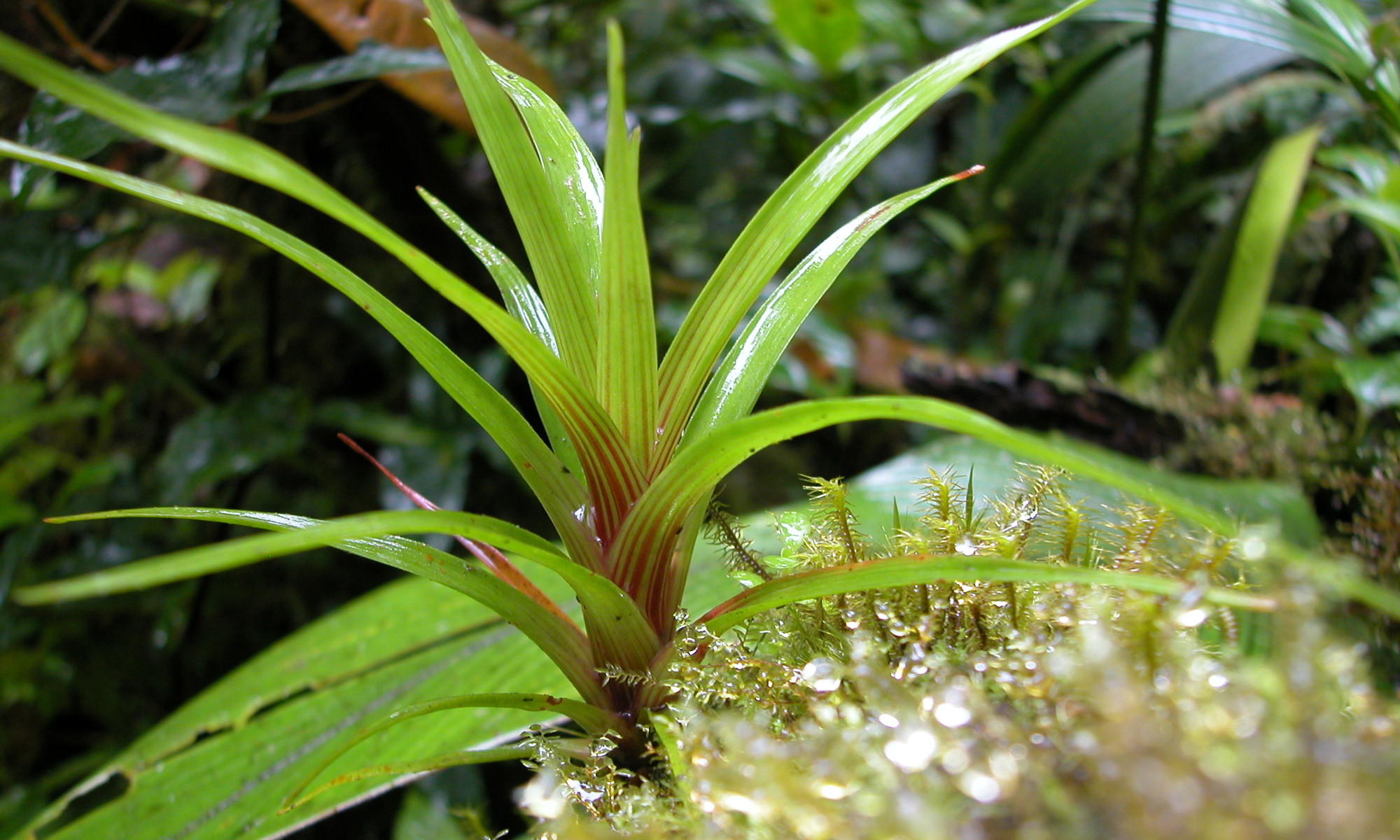not JUST a random collection of letters!
Months ago, a Dr. Suttle of the Suttle lab (a lab on campus that seems to focus a lot on the ‘metagenomics of viruses’ and other such things) gave a talk about the role viruses play in determining ecosystem functioning in the global ocean. After the talk I was curious so I did some googling – sure enough, nobody knows anything really about the microbe communities of bromeliads. The closest thing was the papers on protists that Diane published with Thomas Bell.
Of course, we have our own mission to understand the microbe community: Pavel and Jana have undergraduate (s?) busily identifying protists which are preserved in lugol’s solution. I also have some tucked-away specimens which I thought I would one day identify under the scope.
But then, a guy from the Suttle Lab comes by my office and offers the idea of T-RFLP. Apparently, what one can do is amplify the sequence of DNA that codes for some Important Gene, using a primer that targets the genes of all protists/bacteria/viruses/whatever. Then, you ‘digest’ the stuff with an enzyme that cuts up the DNA whenever a certain special sequence occurs. Where exactly that sequence is will change depending on the ‘species’ of microbe. In the end, you get a pattern of peaks that reflects the diversity of the community.
Of course, there are complications: the same species produces many peaks, and the pattern of peaks of two different species can partially overlap. It is possible to figure out what actual species are in your community IF you have a ‘library’ of possible species to look for. Apparently this is distinct from ‘barcoding’, but I’d be hard-pressed to tell you why.
Anyway, apparently it doesn’t really matter that species identification is (or may be) impossible. Two different community samples will produce two different patterns of spikes. Since my hypothesis in my side experiment was about the similarity between communities – not the actual species composition – I think it should work fine. My idea is to get all these strange-looking patterns of spikes and do ordination (PCA or something?) to test the idea that one group of communities (those with a large mosquito predator) are more variable than others (those with a small mosquito predator).
Between me and this goal are all kinds of snags: the iodine in Lugol’s solution may have destroyed all the bacteria, plus iodine apparently snarls up DNA and makes PCR difficult. My molecular contact guy is very enthusiastic, but I know so little I can’t tell if he is underestimating how difficult this is. I don’t know if I’m getting into a one-week quick’n’dirty molecular thing (which would be great), or a massive project to pioneer the extraction of DNA from Lugol’s solution (not going to happen). The next step is to a) give it a shot this Friday and b) talk to other molecular biology (can you believe they call it “Mo-Bo”) types to get some second opinions.
Looking forward to it! I’m also looking forward to Jana’s reaction to hear I have abandoned the use of a microscope to identify protists. Just so you know, when my molecular point-guy came by my office today he suggested that a sample for T-RFLP should be preserved in the field with ethanol, not Lugols. He guessed 30%, but I haven’t googled about that yet. I’m willing to give this a shot if it might provide some fun data! watch this space for more details!

Of course, being old and old-fashioned I don’t believe in this multi-letter rubbish. But give it a try before you come crawling back to the microscope ;-). Btw I talked to the girl in the Keeling lab about this before our field trip. Maybe try her for a second opinion? Her name is Noriko.
Gah! I was wondering about the iodine – all my “afterthought” samples are now preserved with lugol’s. I may have just resigned myself to an extra semester of sorting 86 samples of protists. arrrghh!